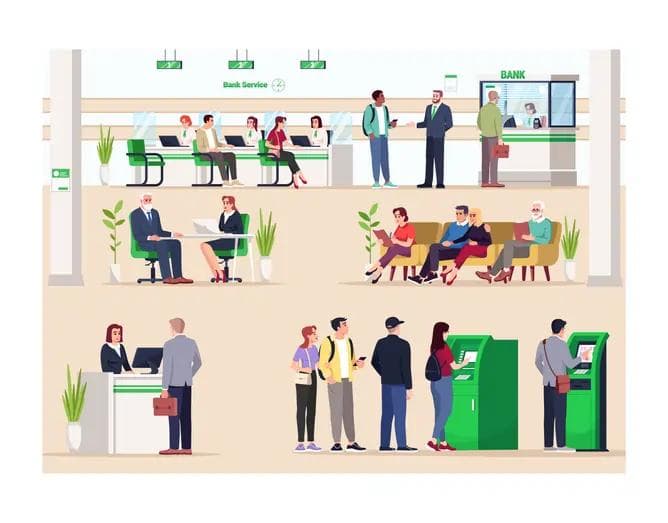Central bank dissonance
Central bank dissonance
Published by Jessica Weisman-Pitts
Posted on November 22, 2021

Published by Jessica Weisman-Pitts
Posted on November 22, 2021

By Frédérique Carrier, Head of Investment Strategy, RBC Wealth Management
Housing and wages: The inflation connection
While stubbornly high inflation has largely been caused by supply chain disruptions, which should eventually wane in 2022, two other important factors, rising housing costs and wages, need to be monitored as those conditions could be stickier.
Housing costs represent a large proportion of the inflation basket for most countries though methodological approaches differ. Home prices across much of the developed world have increased to an extraordinary extent throughout the pandemic, which is fueling inflation. In the U.S., rental costs are now catching up. With housing costs representing a hefty 40 percent of the U.S. Consumer Price Index (CPI), inflation is likely to retain at least one key source of upward pressure over the coming year.
As for wages, given that seven of the last eight U.S. CPI prints have overshot consensus expectations, the risk, in our view, is that higher inflation seeps into wages, potentially setting up a wage-price spiral that would require central banks to abruptly rein in monetary stimulus, which could choke off the recovery and trigger financial market volatility.
Significant wage pressures are already visible in the U.S. and UK. In the former, average hourly earnings grew 4.9 percent year over year in October, though this still represents negative real wage growth given that inflation is even higher. In the UK, wages on a total pay basis climbed 5.8 percent year over year in the July to September period. By contrast, average hourly earnings rose by an anaemic 2.0 percent year over year in Canada and remain subdued in the EU.
Upside pressure on wages arises from labour shortages that have put workers in a position to demand higher pay. COVID-19 lockdowns hindered immigration in developed countries, and some three million workers in the U.S. opted for early retirement, according to the Fed. UK labour shortages are being exacerbated by the banishment of EU workers after Brexit. The minimum wage was also increased in several countries.
The hawks
Markets expect the Bank of Canada (BoC) and the Bank of England (BoE) to be the most proactive in raising interest rates over the next 12 months, with as many as five BoC hikes by the end of 2022 priced into forward market expectations.
The BoC has been aggressive in scaling back COVID-19 stimulus. Given robust economic growth, high COVID-19 vaccination rates, and strong employment gains, the central bank recently reduced asset purchases to the level of reinvestments only, which has effectively ended its quantitative easing programme. BoC Governor Tiff Macklem and his BoC colleagues suggested interest rates could rise as soon as April 2022. October inflation is running at a high 4.7 percent year over year, which we believe the central bank will likely see as vindicating its position.
In the UK, the BoE recently stressed that some modest tightening of monetary policy would likely be necessary to meet its two percent inflation target. Prices surged in October, with the CPI reaching 4.2 percent, the highest level since 2018. The BoE has been waiting to see the impact on the labour market of the termination of the jobs support programme in September before increasing rates, but with unemployment continuing to fall and robust wage growth, the probability of a rate increase in December has grown. The market expects another two hikes in 2022.
In the U.S., higher and more persistent inflation may mean a shift in expectations. Could the current $15 billion per month pace of tapering be accelerated to say $20 billion per month? And how soon and by how much will interest rates be increased?
We continue to expect the Fed will keep the tapering pace at $15 billion as markets like consistency. With tapering likely to end in mid-2022, we expect the Fed to take stock of conditions at that time and look for unemployment below four percent before raising rates. We anticipate one increase in late 2022, though we acknowledge a second hike in 2022 is possible if inflation remains high.
By Frédérique Carrier, Head of Investment Strategy, RBC Wealth Management
Housing and wages: The inflation connection
While stubbornly high inflation has largely been caused by supply chain disruptions, which should eventually wane in 2022, two other important factors, rising housing costs and wages, need to be monitored as those conditions could be stickier.
Housing costs represent a large proportion of the inflation basket for most countries though methodological approaches differ. Home prices across much of the developed world have increased to an extraordinary extent throughout the pandemic, which is fueling inflation. In the U.S., rental costs are now catching up. With housing costs representing a hefty 40 percent of the U.S. Consumer Price Index (CPI), inflation is likely to retain at least one key source of upward pressure over the coming year.
As for wages, given that seven of the last eight U.S. CPI prints have overshot consensus expectations, the risk, in our view, is that higher inflation seeps into wages, potentially setting up a wage-price spiral that would require central banks to abruptly rein in monetary stimulus, which could choke off the recovery and trigger financial market volatility.
Significant wage pressures are already visible in the U.S. and UK. In the former, average hourly earnings grew 4.9 percent year over year in October, though this still represents negative real wage growth given that inflation is even higher. In the UK, wages on a total pay basis climbed 5.8 percent year over year in the July to September period. By contrast, average hourly earnings rose by an anaemic 2.0 percent year over year in Canada and remain subdued in the EU.
Upside pressure on wages arises from labour shortages that have put workers in a position to demand higher pay. COVID-19 lockdowns hindered immigration in developed countries, and some three million workers in the U.S. opted for early retirement, according to the Fed. UK labour shortages are being exacerbated by the banishment of EU workers after Brexit. The minimum wage was also increased in several countries.
The hawks
Markets expect the Bank of Canada (BoC) and the Bank of England (BoE) to be the most proactive in raising interest rates over the next 12 months, with as many as five BoC hikes by the end of 2022 priced into forward market expectations.
The BoC has been aggressive in scaling back COVID-19 stimulus. Given robust economic growth, high COVID-19 vaccination rates, and strong employment gains, the central bank recently reduced asset purchases to the level of reinvestments only, which has effectively ended its quantitative easing programme. BoC Governor Tiff Macklem and his BoC colleagues suggested interest rates could rise as soon as April 2022. October inflation is running at a high 4.7 percent year over year, which we believe the central bank will likely see as vindicating its position.
In the UK, the BoE recently stressed that some modest tightening of monetary policy would likely be necessary to meet its two percent inflation target. Prices surged in October, with the CPI reaching 4.2 percent, the highest level since 2018. The BoE has been waiting to see the impact on the labour market of the termination of the jobs support programme in September before increasing rates, but with unemployment continuing to fall and robust wage growth, the probability of a rate increase in December has grown. The market expects another two hikes in 2022.
In the U.S., higher and more persistent inflation may mean a shift in expectations. Could the current $15 billion per month pace of tapering be accelerated to say $20 billion per month? And how soon and by how much will interest rates be increased?
We continue to expect the Fed will keep the tapering pace at $15 billion as markets like consistency. With tapering likely to end in mid-2022, we expect the Fed to take stock of conditions at that time and look for unemployment below four percent before raising rates. We anticipate one increase in late 2022, though we acknowledge a second hike in 2022 is possible if inflation remains high.
Explore more articles in the Banking category











